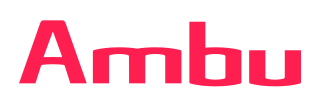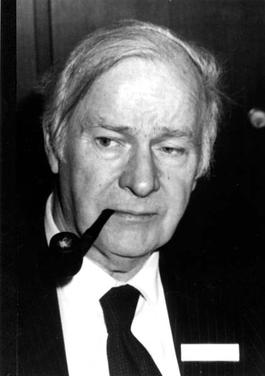Related Research Articles
Olympus Corporation is a Japanese manufacturer of optics and reprography products. Olympus was established on 12 October 1919, initially specializing in microscopes and thermometers. Olympus holds roughly a 70 percent share of the global endoscope market, estimated to be worth approximately US$2.5 billion. Its global headquarters are located in Hachioji, Tokyo, Japan.

Laparoscopy is an operation performed in the abdomen or pelvis using small incisions with the aid of a camera. The laparoscope aids diagnosis or therapeutic interventions with a few small cuts in the abdomen.

An endoscope is an inspection instrument composed of image sensor, optical lens, light source and mechanical device, which is used to look deep into the body by way of openings such as the mouth or anus. A typical endoscope applies several modern technologies including optics, ergonomics, precision mechanics, electronics, and software engineering. With an endoscope, it is possible to observe lesions that cannot be detected by X-ray, making it useful in medical diagnosis. An endoscope uses tubes only a few millimeters thick to transfer illumination in one direction and high-resolution video in the other, allowing minimally invasive surgeries. It is used to examine the internal organs like the throat or esophagus. Specialized instruments are named after their target organ. Examples include the cystoscope (bladder), nephroscope (kidney), bronchoscope (bronchus), arthroscope (joints) and colonoscope (colon), and laparoscope. They can be used to examine visually and diagnose, or assist in surgery such as an arthroscopy.

Pentax Corporation is a Japanese camera and optical equipment manufacturer, and currently, it exists as the Pentax Life Care Business Division of Hoya's medical endoscope business, as well as the digital camera brand of Ricoh Imaging, a subsidiary of Ricoh.

Tuttlingen is a town in Baden-Württemberg, capital of the district Tuttlingen. Nendingen, Möhringen and Eßlingen are three former municipalities that belong to Tuttlingen. Tuttlingen is located in Swabia east of the Black Forest region in the Swabian Jura.

Camran Nezhat is an American laparoscopic surgeon, reproductive endocrinology and infertility sub-specialist who has been teaching and practicing medicine and surgery as an adjunct clinical professor of surgery, and obstetrics and gynecology at Stanford University Medical Center in Palo Alto, California since 1993. Nezhat is also chair of the Association of the Adjunct Clinical Faculty, Stanford University School of Medicine, and a clinical professor of OB/GYN at the University of California, San Francisco.

Functional endoscopic sinus surgery (FESS) is a procedure that is used to treat sinusitis and other conditions that affect the sinuses. Sinusitis is an inflammation of the sinuses that can cause symptoms such as congestion, headaches, and difficulty breathing through the nose.

B. Braun is a German medical and pharmaceutical device company, which currently has more than 63,000 employees globally, and offices and production facilities in more than 60 countries. Its headquarters are located in Melsungen, in central Germany. The company was founded in 1839 and is still owned by the Braun family.

Ambu, or officially Ambu A/S, is a Danish company that develops, produces and markets single-use endoscopy solutions, diagnostic and life-supporting equipment to hospitals, private practices, and rescue services.

Harold Horace Hopkins FRS was a British physicist. His Wave Theory of Aberrations,, is central to all modern optical design and provides the mathematical analysis which enables the use of computers to create the highest quality lenses. In addition to his theoretical work, his many inventions are in daily use throughout the world. These include zoom lenses, coherent fibre-optics and more recently the rod-lens endoscopes which 'opened the door' to modern key-hole surgery. He was the recipient of many of the world's most prestigious awards and was twice nominated for a Nobel Prize. His citation on receiving the Rumford Medal from the Royal Society in 1984 stated: "In recognition of his many contributions to the theory and design of optical instruments, especially of a wide variety of important new medical instruments which have made a major contribution to clinical diagnosis and surgery."

Given Imaging Ltd. is an Israeli medical technology company that manufactures and markets diagnostic products for the visualization and detection of disorders of the gastrointestinal tract. Until March 2014, it was dual-listed on both the NASDAQ and the Tel Aviv Stock Exchange, where it was a component of the TA-100 Index and the TA BlueTech Index. In March 2014 it was acquired by Covidien and became a private company. In 2015 Covidien was purchased by Medtronic.

Philipp Bozzini was born in Mainz, Germany. On June 12, 1797, he was awarded the degree of doctor of medicine. From 1804 onwards, Bozzini devoted himself virtually completely to develop his instrument, Lichtleiter or "Light Conductor", a primitive endoscope to allow for inspecting the ear, urethra, rectum, female bladder, cervix, mouth, nasal cavity, or wounds. Philipp Bozzini, using the modest means available at the beginning of the 19th century, was able to show to the medical profession the way to endoscopy. With his instrument and ideas, he was three quarters of a century ahead of the technical and scientific possibilities of his time. Historians agree that this instrument using artificial light and various mirrors and specula was the beginning of a large family of endoscopes.
Tracheal intubation, an invasive medical procedure, is the placement of a flexible plastic catheter into the trachea. For millennia, tracheotomy was considered the most reliable method of tracheal intubation. By the late 19th century, advances in the sciences of anatomy and physiology, as well as the beginnings of an appreciation of the germ theory of disease, had reduced the morbidity and mortality of this operation to a more acceptable rate. Also in the late 19th century, advances in endoscopic instrumentation had improved to such a degree that direct laryngoscopy had finally become a viable means to secure the airway by the non-surgical orotracheal route. Nasotracheal intubation was not widely practiced until the early 20th century. The 20th century saw the transformation of the practices of tracheotomy, endoscopy and non-surgical tracheal intubation from rarely employed procedures to essential components of the practices of anesthesia, critical care medicine, emergency medicine, gastroenterology, pulmonology and surgery.
Axess Vision Technology is a start-up company and manufacturer of medical devices, mainly endoscopes. It is headquartered in Saint Pierre des Corps, France. It is competing with Ambu and Single Use Surgical Ltd to develop the world first generation of disposable endoscopes. These companies are responding to a market need of getting rid of cross contamination from flexible endoscopes, the latter ranked third in the ECRI 2011 top 10 Health Hazards. Even when endoscopes are spotless, there remains a risk of infection of 1%. Therefore, these endoscopes are designed to be used on one patient only before being incinerated.
Integrated Medical Systems International, Inc., (IMS) is a surgical instrument management and clinical consulting company specializing in repair management, sterile process management, tracking, and other services related to surgical and endoscopic devices and instruments. Today the company operates repair facilities in Alabama, Florida, and Maryland. IMS has more than 1,200 employees nationwide.
Sybill Storz is a businesswoman and daughter of Karl Storz. Between 1996 and 2018 she headed Karl Storz GmbH. She was among the recipients of the Rudolf-Diesel-Medaille for 2004.
Architectural endoscopy or architectural envisioning is used to photograph and film models of new buildings' exterior and interior in the planning stage. An architectural model of a new building in a 1:500 scale is thus correctly visualized from the perspective of a pedestrian walking by in the street. An endoscope connected to a video camera allows for the creation of walkthroughs, allowing the architect to develop the first draft further, and the public to share and critique the architect's vision of proposed buildings and cities.
Robert S. Neuwirth was an American physician, inventor, and real estate developer. Neuwirth devoted his career to crafting and refining noninvasive practices promoting women's health. He was one of the first doctors to employ endoscopy in gynecological practice, in which a small optical instrument called an endoscope is used to examine areas tucked deep into the body. He is known as the first doctor to introduce laparoscopy to the United States, in 1968.
Erich Mühe was a German surgeon known for performing the first laparoscopic cholecystectomy in 1985.
George Berci was a Hungarian-American surgeon at Cedars-Sinai Medical Center in Los Angeles, United States and a pioneer in minimally invasive surgeries. He developed instruments for laparoscopic surgery that have been incorporated into minimally invasive surgery techniques used today.
References
- ↑ Nezhat, Camran (2005). "Chapter 19. 1960's". Nezhat's History of Endoscopy. Society of Laparoendoscopic Surgeons. Archived from the original on 2018-07-27. Retrieved 2017-10-22.
- 1 2 Berci, G; Cuschieri, A (December 1996). "Karl Storz, 1911-1996. A remembrance". Surgical Endoscopy. 10 (12): 1123. doi: 10.1007/s004649900261 . PMID 8939825. S2CID 43551017.
- ↑ "KARL STORZ Introduces New 3D Surgical Imaging System and Modular Camera Platform at Arab Health 2020". Hospimedica.com. 2020-01-30. Retrieved 2024-09-11.
- 1 2 "Karl Storz Endoskope" [Karl Storz Endoscopes]. St. Galler Tagblatt (in German). 2011-12-14. Retrieved 2024-09-11.
- ↑ Gelijns, Annetine C.; Rosenberg, Nathan (1995). "Chapter 4: From the Scalpel to the Scope: Endoscopic Innovations in Gastroenterology, Gynecology, and Surgery". In Rosenberg, N; Gelijns, AC; Dawkins, H (eds.). Sources of Medical Technology: Universities and Industry. National Academies Press (US).
- ↑ Leonhard, Martin; Irion, Klaus-Martin (2011). "Endoscopy". Springer handbook of Medical Technology. Berlin: Springer. pp. 379–403. ISBN 978-3-540-74657-7.
- 1 2 Lautemann, Kerstin; Leonhard, Martin; Stern, Regina; Heda, Jennifer (2014). "Chapter 264: Instrumentation for Arthroscopy and Sports Medicine". In Doral, M.N.; Karlsson, J. (eds.). Sports Injuries: Prevention, Diagnosis, Treatment and Rehabilitation (2nd ed.). Berlin: Springer Berlin. pp. 3273–3291. ISBN 978-3-642-36568-3.
- ↑ "Karl Storz Endoscopy-America, Inc.: Private Company Information". Bloomberg. Retrieved 23 October 2017.
- ↑ Careless, James (June–July 2015). "Today's Cutting-Edge Borescopes: A Sampling of What's Available" (PDF). Aviation Maintenance.
- ↑ "KARL STORZ Endoscopy Canada Ltd". September 7, 2020.
- 1 2 Möllers, Ludger (9 December 2012). "Karl Storz: Schwäbischer Pionier und Firmengründer". Schwäbische.de (in German). Archived from the original on 6 July 2015.
- 1 2 "Preisträgerin 2006: Sybill Storz" [Prize winner 2006: Sybill Storz]. Konrad-Adenauer-Stiftung (in German). Konrad-Adenauer-Stiftung.
- ↑ Ludger Möllers: „Mit Begeisterung und Fleiß!“ at archive.today (archived 2014-01-24). In: Schwäbische Zeitung vom 10. Mai 2012, Artikelanfang. Firmenmuseum und Mitmachmuseum. In: karlstorz.com, aufgerufen am 26. April 2016.
- ↑ Ong, Matthew Bin Han (21 July 2017). "Anti-morcellation advocate files "wrongful death" suit against Karl Storz and Brigham & Women's Hospital". The Cancer Letter.
- ↑ "Press Release: KARL STORZ decides for future-looking legal form". KARL STORZ. 20 August 2017.
- ↑ missing?
- ↑ "Tuttlingen: Karl Storz: Schwäbischer Pionier und Firmengründer". 2015-07-06. Archived from the original on 6 July 2015. Retrieved 2022-08-29.
- ↑ "wvib - wirtschaftsverband industrieller unternehmen in baden e. V. - Mitgliedsunternehmen". 2020-05-13. Archived from the original on 13 May 2020. Retrieved 2022-08-29.
- ↑ Jansen, Matthias (2021-09-12). "Mehr als 20 Millionen Euro: Arbeiten am Karl-Storz-Campus laufen" [More than 20 million euros: Work on the Karl Storz Campus is underway]. www.schwaebische.de (in German). Retrieved 2024-09-11.
- ↑ "Karl Storz entwickelt Einweg-Endoskop" [Karl Storz develops one-way endoscope]. www.schwaebische.de (in German). 2018-11-13. Retrieved 2024-09-11.
- ↑ Dörnfelder, Die Redaktion u Andreas (2012-03-16). "Karl Storz baut Logistikzentrum" [Karl Storz builds logistics center]. www.econo.de (in German). Retrieved 2024-09-11.
- ↑ Dörffeldt*, Iris (2024-01-12). "Deutsche Reinraumtechnologie für Smart Factory in Estland". DeviceMed (in German). Retrieved 2024-09-11.
- ↑ "Deutsche Reinraumtechnologie für Smart Factory in Estland | CHEManager" [German cleanroom technology for smart factory in Estonia]. www.chemanager-online.com. Retrieved 2024-09-11.
- ↑ "KARL STORZ unifies its US organizations under a central management team, Sonal Matai named US President". BusinessWire. 2024-02-06. Retrieved 2024-09-11.
- ↑ "KARL STORZ and Fujifilm Announce Strategic Relationship to Transform Endoscopy". BusinessWire. 2024-08-26. Retrieved 2024-09-11.
- ↑ "AventaMed, a KARL STORZ Company, Gains FDA Clearance for Solo+™ Ear-Tube Placement Device". BusinessWire. 2024-08-06. Retrieved 2024-09-11.
- ↑ "KARL STORZ Acquires British AI Specialist Innersight Labs". BusinessWire. 2024-01-10. Retrieved 2024-09-11.
- ↑ "KARL STORZ Acquires British AI Specialist Innersight Labs". BioSpace. 2024-01-10. Retrieved 2024-09-11.
- ↑ Brusco, Sam (2024-07-06). "Asensus Surgical to Merge with KARL STORZ". Medical Product Outsourcing. Retrieved 2024-09-11.
- ↑ "Asensus Surgical Announces Closing of Acquisition by KARL STORZ". GlobeNewswire News Room. 2024-08-22. Retrieved 2024-09-11.
- ↑ "KARL STORZ IMAGE 1 SPIES Named Innovation of the Year by Society of Laparoendoscopic Surgeons". BusinessWire. 2014-12-23.